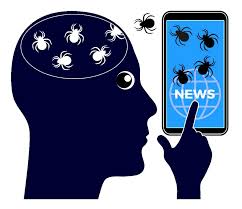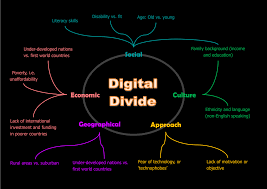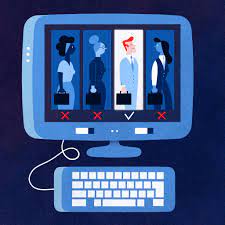Purposes of Computer Innovation:
Beneficial Effects:
Thanks to modern breakthroughs, many aspects of our daily lives have improved significantly. Medical treatment has become more accurate and efficient because of machines and computers. Engineers can utilize computing technology to analyze data and design better projects. Communication is faster and easier now as we can communicate with anyone around the world. Furthermore, the art world has seen a revolution with new ways for creatives to create, share, and sell their works. These progressions are invaluable; they save lives, make professions more effective, and break down geographical boundaries.
Harmful Effects:
The advancement of technology also brings various challenges. One challenge is the loss of privacy due to companies collecting and misusing private data, which calls for proper regulations. Another challenge is job losses caused by computerized innovations, and people's dependence on tech can cause negative outcomes. Moreover, overuse of technology can also lead to addiction, sleep deprivation, decreased physical activity, and other health issues. It is vital to consider the risks associated with tech and mitigate it through responsible use and regulation that protect individuals' rights and wellbeing. Technology has many advantages; however we must be aware of its potential adverse impact.
Exceeded Purposes:
The World Wide Web was first created in 1989 to aid the scientific community, however it has since grown and is now integral to everyday life. Technology brings many benefits, although it also produces issues such as targeted advertising that can exploit our data. Machine learning and data mining have been enriching industries but are subject to biases that may be discriminatory. It is important to recognize the potential drawbacks of technology, lessen their effect via responsible use and regulation, and focus on the beneficial aspects of its use. In this way, we safeguard individuals' privacy while attaining the full potential of technology for positive outcomes.


Digital Divide:
Conceptuals:
The digital divide is the inequitable access to technology and the internet. This can affect people's employment prospects, lifestyle, and educational goals. Those without access to technology or digital literacy may experience social and economic inequality that exacerbates the unfairness of the digital divide even more. It is crucial to address this divide and guarantee everyone has access to the necessary resources in order to create a more equitable environment worldwide.
Contributing Factors:
The digital divide is caused by multiple factors, including limited access to technology and digital infrastructure, affordability, low levels of digital literacy, cultural and social barriers, and inadequate government policies and infrastructure. The uneven distribution of high-speed internet, computers, and mobile devices can prevent people from accessing the internet, particularly those living in rural or remote areas. Even when technology is accessible, it can be too expensive for some, particularly people from lower-income backgrounds. A lack of digital literacy and skills can also limit people's ability to use technology effectively, and cultural and social factors can further discourage technology adoption. Inadequate government policies and infrastructure can exacerbate these issues by limiting access to technology and digital literacy training.
Reduce Digital Divide:
Reducing the digital divide requires a multifaceted approach, both globally and locally. One way to address the issue is to increase access to technology, particularly in underserved communities, through infrastructure investments, public-private partnerships, and policies that encourage digital inclusion. Improving digital literacy and skills through education and training programs can also help bridge the gap. Additionally, making technology more affordable, for instance through subsidies or reducing taxes, can improve access for low-income individuals and families. Collaborating with local community organizations, businesses, and government agencies can help tailor solutions to specific needs and challenges. Ultimately, reducing the digital divide requires recognizing the importance of digital inclusion and making it a priority for policymakers, technology providers, and society as a whole.


Problems with the Internet:
Computer Bias:
Computer bias, also known as algorithmic bias, is a growing concern in the technology industry. Many computer programs, particularly those based on machine learning, rely on data to make decisions and predictions. However, this data can be biased, and when the programs are trained on this biased data, the algorithms themselves can become biased. For example, facial recognition software has been shown to have higher error rates when analyzing the faces of people with darker skin tones or who are women. This is because the training data for the software primarily consists of lighter-skinned or male faces, and the software has not been designed to take into account the different features of people with darker skin or women. Bias can also be introduced if the programmers themselves have biases, either intentionally or unintentionally. These biases can have significant consequences, such as reinforcing stereotypes, perpetuating discrimination, and reducing opportunities for certain groups. Addressing computer bias will require increased diversity among programmers and data sets, and the development of more transparent and accountable algorithms.
Crowdsourcing:
Crowdsourcing is a practice of outsourcing a task or project to a large and undefined group of people, typically through an open call, to collectively contribute their time, expertise, or resources to accomplish a shared goal. The goal of crowdsourcing is to leverage the collective intelligence of a diverse group to solve a problem, generate ideas, or create content. Crowdsourcing can be used in various domains, including science, journalism, marketing, design, and education. Examples of crowdsourcing include citizen science projects where the public contributes data to scientific research, crowdfunding campaigns to raise funds for projects, and online communities where people come together to solve complex problems or generate new ideas. Crowdsourcing allows for the pooling of diverse perspectives and expertise, often resulting in innovative solutions and new insights. It also enables more extensive participation and engagement of the public in decision-making processes, leading to a sense of ownership and shared responsibility. However, crowdsourcing can also present ethical and practical challenges, such as ensuring the accuracy and quality of contributions, protecting intellectual property, and avoiding exploitation.
Ethical and Legal Issues in Computing:
Computer crime and privacy are two of the main concerns regarding computer ethics. The unauthorized access and manipulation of computer systems in order to commit offenses highlights the need for responsible use of technology. In addition to the theft of funds, the issue of privacy is a major concern. Computers have the ability to gather and store vast amounts of personal information, putting individuals at risk of having their private data compromised. Furthermore, the power that computer professionals possess as a result of their knowledge of computer systems is a potential source of ethical indiscretions. Adopting ethical principles such as protecting confidentiality can help prevent breaches of privacy and other ethical issues within the computer industry.

